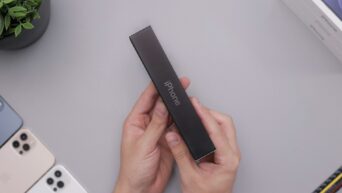
Credit: Unsplash
The little copter soared into the Martian sky.
For a couple of weeks now, the crew at NASA’s Jet Propulsion Laboratory in Pasadena, California has been very slowly and carefully unfurling the Ingenuity rotocopter from the belly of the Perseverance rover on the surface of Mars, all with the goal of manning the very first manually controlled flight on another planet. There were some delays in the interest of Ingenuity’s safety, but on Monday, they finally got the all-green.
On Monday morning, Ingenuity’s two rotors roared to life (or, well, growled to life, given its small size), and it gently rose into the Martian sky. The little copter rose about ten feet into the air, hovered where it was, performed a 360 turn, took a photo, and then safely touched down back on the planet’s surface. It’s important to realize that while this sounds very simple, it only seems that way to us because of how we understand terrestrial physics. We know how a drone is supposed to fly here on Earth, but the atmospheric conditions on Mars are completely different. Different wind, no oxygen, lower gravity, and more required years of study and experimentation, all of which have officially paid off.
Today, the Ingenuity Mars Helicopter achieved liftoff — becoming the first aircraft to fly on another planet. NASA proved once again that with relentless determination and the power of America’s best minds, anything is possible. pic.twitter.com/elC4KPgSOL
— President Biden (@POTUS) April 19, 2021
“Now, 117 years after the Wright brothers succeeded in making the first flight on our planet, NASA’s Ingenuity helicopter has succeeded in performing this amazing feat on another world,” said Thomas Zurbuchen, associate administrator for NASA’s Science Mission Directorate, in a statement.
“While these two iconic moments in aviation history may be separated by time and 173 million miles of space, they now will forever be linked. As an homage to the two innovative bicycle makers from Dayton, this first of many airfields on other worlds will now be known as Wright Brothers Field, in recognition of the ingenuity and innovation that continue to propel exploration.”
In honor of the Wright Brothers and their aviation achievements, Ingenuity contains a single postage stamp-sized piece of fabric from the original Flyer 1 prototype.
































